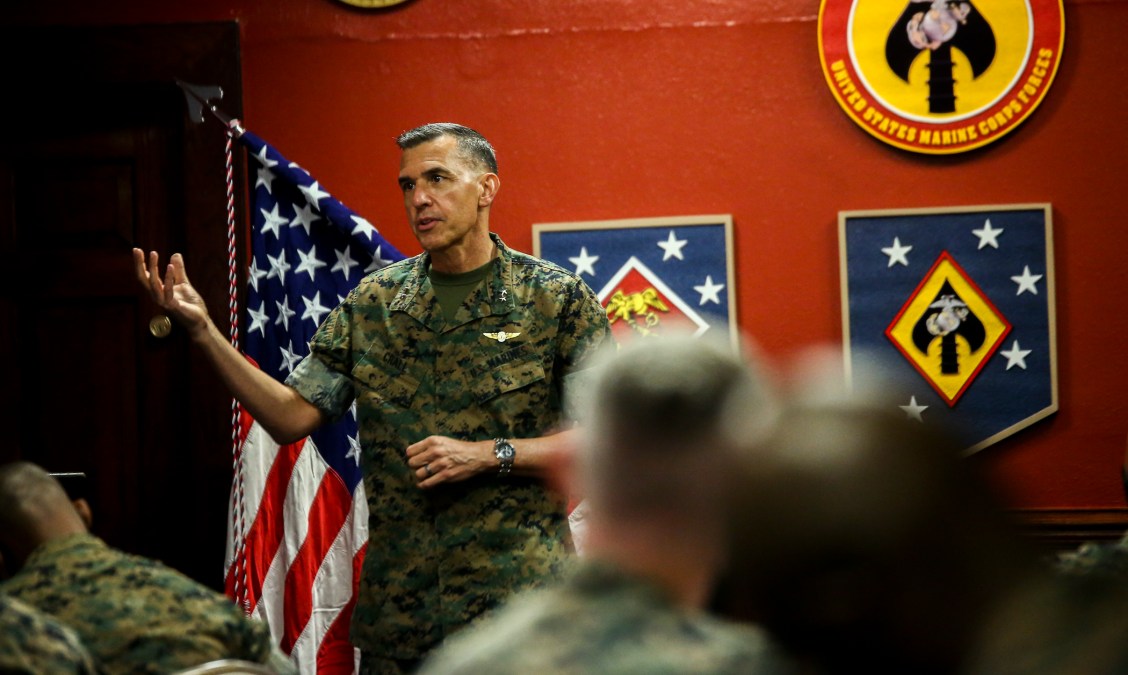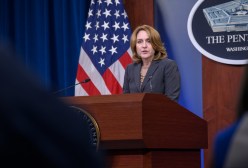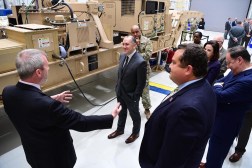Top general says JADC2 cross-functional team to work for 3-5 more years

The cross-functional team implementing one of the military’s top modernization initiatives is only expected to continue its work for the next three to five years, a top general said Thursday.
In an interview with FedScoop, Lt. Gen. Dennis Crall, the Joint Staff’s J-6 director, said that once the technology behind JADC2 is more mature the cross-functional team (CFT) could be replaced by a new, yet-defined structure.
Speaking to FedScoop, the senior officer defended the current structure of the Joint All Domain Command and Control (JADC2) CFT as the right governance structure for now, but noted this will likely change in the coming years.
The goal for the CFT is to “work our way out of the job in three-to-five years,” Crall said.
The CFT was designated the implementation lead for the new strategy to connect all networks on a battlefield to fuse data from air, land, sea, space and cyberspace operations. Crall recently added a new division on the Joint Staff’s J-6 to help oversee the CFT’s work. JADC2 is the technical framework connected to the Joint Warfighting Concept that Defense Secretary Lloyd Austin has promoted as the DOD’s new way of fighting.
Crall defended the CFT structure after a report published by the Center for Strategic and International Security called for a program executive office or lead military service to drive the broad changes needed to network data and other technologies that will be required to build JADC2. The report stresses that without centralizing development and authorities to build JADC2 networks, services will each create their own siloed tech.
“[S]ervices would each develop a new generation of stove-piped command and control systems that are highly capable within their respective domains. Cross-service and cross-domain interoperability would be a secondary priority — or worse, an unfunded requirement,”
But for Crall, the CFT is “the best governance for our current time,” he told FedScoop. “One could argue there are other alternatives once this matures.”
Crall stressed the CFT’s agility and access as its key means of succeeding. A program executive office tries to reduce to much risk to achieve the same level of agility, Crall said. The group is run by Brig. Gen. Robert Parker and has several working groups within the team focused on different lines of effort within the JADC2 strategy.
The point of maturity Crall wants to see before considering alternatives is a JADC2 “minimum viable product” that all services can use to improve their communications across domains. The CFT itself doesn’t build or field anything, but is designed to support and integrate each service’s own acquisition and development work. The Army has its Project Convergence, the Navy runs Project Overmatch and the Air Force is working on the Advanced Battle Management System as their contributions to JADC2.
“The CFT really is agnostic and an honest broker,” Crall said.
But the report cites previous modernization failures where the military left development to the services and tried to integrate that work through Joint Staff-issued requirements. The report stressed the need for a stronger, central authority than the CFT provides.
Crall said that the CFT makes up for this with its agility and access to senior leaders. The CFT was chartered by the deputy secretary of defense and also has direct access to the Joint Requirements Oversight Council, which sets acquisition requirements for major systems.
“Our CFT is absolutely necessary,” he said.






